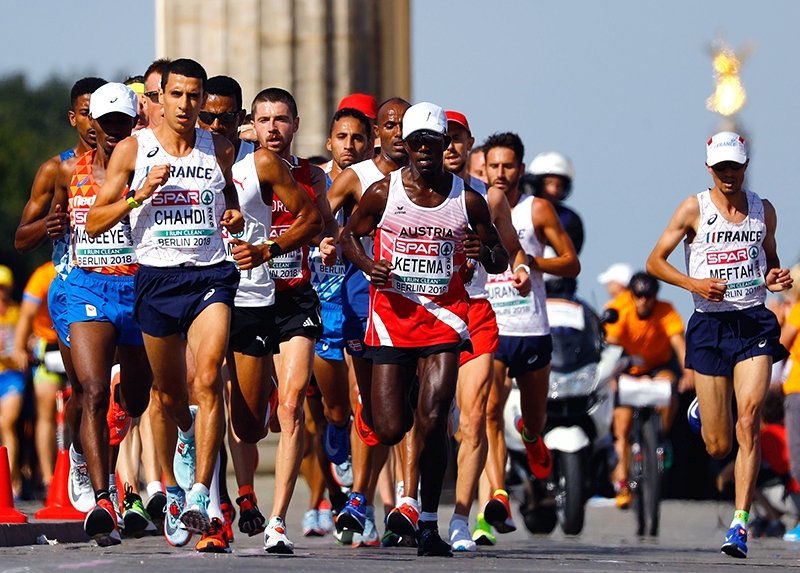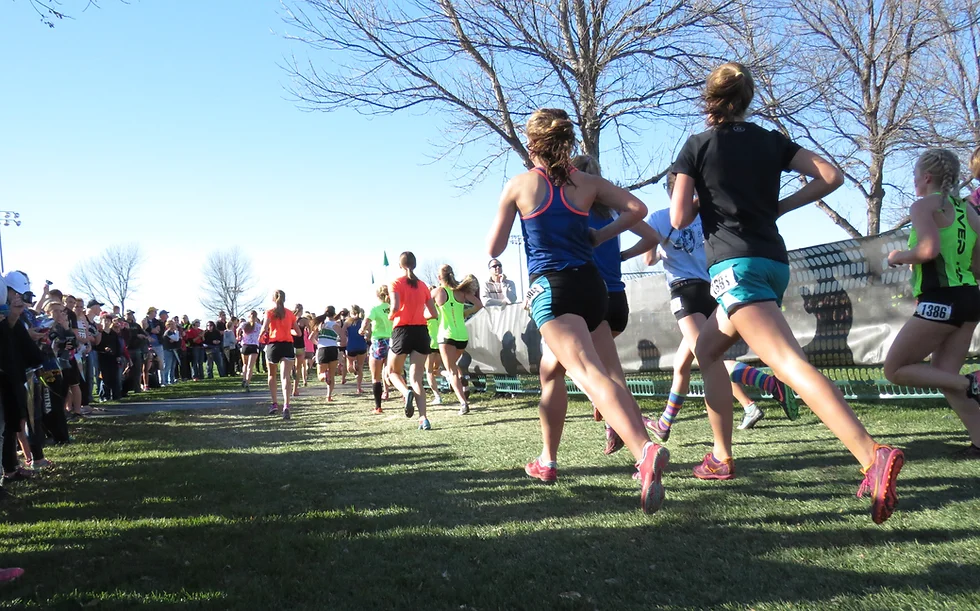Pacing is one of the most critical aspects of marathon running, yet it is often overlooked by many first-time participants. Running a marathon races isn’t just about finishing the race—it’s about managing your energy over 26.2 miles to ensure you cross the finish line strong. Proper pacing can make the difference between a personal best and a struggle to complete the race. In this post, we’ll explore why pacing matters, how to pace yourself effectively, and how to avoid common pacing mistakes that could derail your marathon race.

1. Understanding the Importance of Pacing
Pacing refers to the speed at which you run during a race, and it’s essential because it directly affects your endurance and overall performance. A marathon is a long race, requiring you to balance speed with stamina. If you start too fast, you risk burning out before reaching the finish line. If you start too slow, you might not be able to achieve your desired finish time.
Why Pacing is Key:
- Energy conservation: The goal of pacing is to ensure that you have enough energy to finish strong. By pacing yourself correctly, you prevent early fatigue and ensure that you have the stamina to complete the race at a consistent effort.
- Preventing burnout: Marathons are grueling, and pacing is essential to avoid hitting the wall—a term used when runners experience extreme fatigue due to running too fast early on.
- Optimizing performance: Effective pacing can help you achieve your target time, whether that’s finishing in a specific time frame or just completing the race without injury.
Pacing allows you to run the marathon at a sustainable speed, preserving your energy for the later stages when your body needs it most.
2. The Role of Negative Splits
A negative split refers to running the second half of the marathon faster than the first. While it may sound counterintuitive, negative splits are often the most effective pacing strategy for marathoners. Starting slow and gradually increasing your pace can help you finish stronger and with less fatigue.
Benefits of Running Negative Splits:
- Energy distribution: By starting conservatively, you conserve energy for the latter part of the race, allowing you to push the pace when others are starting to tire.
- Mental advantage: Maintaining a consistent pace and gradually increasing it can give you a mental boost, especially when you pass other runners who started too fast.
- Stronger finish: Negative splits allow you to finish with a sense of accomplishment, as your last miles will feel more controlled and deliberate rather than a desperate sprint to the finish.
Negative splits are often associated with more experienced marathon runners, but even beginners can adopt this strategy for better race outcomes.
3. Pacing Strategies for Different Marathon Goals
The ideal pacing strategy can vary depending on your marathon goals—whether you’re aiming for a personal best, simply completing the race, or finishing under a certain time. Here are different pacing strategies tailored to various goals:
For a Personal Best:
- Target pace: Calculate your goal finish time and use that pace to determine your target splits for each mile. Aim for even pacing (running each mile at the same pace) or slight negative splits.
- Use a pace band: Many runners use pacing bands, which are wristbands that show the required time for each split based on your goal. This helps you stay on track during the race.
- Monitor your effort: Use your body’s signals (breathing, perceived effort, and heart rate) to gauge your pace. This is especially helpful for preventing burnout and adjusting if needed.
For First-Time Marathoners:
- Start conservatively: As a beginner, aim to start slower than you think you should. Many first-timers get caught up in the excitement and start too fast, leading to exhaustion later in the race.
- Run/walk strategy: If you’re aiming for a more relaxed race experience, consider using a run/walk strategy. Alternate running with walking breaks at set intervals (e.g., running for 5 minutes, walking for 1 minute).
- Focus on completion: Your pacing should prioritize finishing the race strong and injury-free rather than chasing a specific time. Focus on staying consistent and managing your energy levels.
For Experienced Runners:
- Build pace gradually: Experienced runners often aim for negative splits, starting slightly slower than their target pace and picking it up in the later miles.
- Use splits wisely: Experienced runners should target specific pace goals for each segment of the marathon, adjusting based on the terrain, weather, and how their body feels.
- Know your limits: For seasoned runners, pacing also means knowing when to push and when to hold back. This comes with experience and an understanding of your own body’s rhythms.
4. How to Find Your Optimal Marathon Pace
Finding your optimal marathon pace takes time and practice. It’s important to test different pacing strategies during your training to determine what works best for you.
Methods for Finding Your Marathon Pace:
- Tempo runs: Tempo runs are runs where you maintain a comfortably hard pace—usually around 80-90% of your maximum effort. These runs help you gauge what feels sustainable and what pace you can hold for long periods.
- Long runs: During your long training runs, experiment with different paces to find what feels most comfortable. Your goal is to find a pace that you can sustain for 26.2 miles without burning out.
- Race simulations: A few weeks before race day, simulate race conditions by running a race-pace long run. This will give you a feel for the pacing you should maintain during the marathon.
It’s important to practice pacing during your training so that it becomes second nature on race day. Pay attention to your energy levels, breathing, and mental state to determine which pace suits you best.
5. How to Adjust Your Pace During the Marathon
On race day, even with the best preparation, unexpected factors like weather, terrain, or race-day nerves can impact your pace. Knowing how to adjust during the marathon is essential to maintaining your energy and optimizing performance.
Adjusting for External Factors:
- Hills: Use a slower pace on hills, particularly uphill, and focus on maintaining effort rather than speed. Downhills can allow for faster paces, but be cautious not to overexert your quads.
- Weather conditions: Hot or windy conditions may require slowing down to avoid overheating or fatigue. Adjust your pace based on how your body feels and make sure to hydrate more frequently.
- Fueling: If you feel your energy levels dropping, adjust your pace to allow for fueling or hydration. Don’t be afraid to take a brief walk or slow down to get the nutrition your body needs.
Adapting your pace during the race shows self-awareness and the ability to listen to your body. Overexertion early in the race can lead to significant performance declines, but pacing adjustments allow you to manage your energy more efficiently.
6. Tools and Technology to Help You Pace
Several tools and technologies can help you stay on pace during your marathon. These can be especially useful for tracking your splits and adjusting your strategy throughout the race.
Helpful Tools:
- GPS watches: Many marathon runners rely on GPS watches to track their pace in real time. These watches display your current pace, average pace, and distance, helping you stay within your target pace.
- Pacing apps: Some apps, like Strava or Runkeeper, allow you to plan your pacing strategy in advance and give you real-time feedback during the race.
- Pacing bands: These wristbands show the splits needed to reach your goal time, offering a quick reference during the race without needing to check your watch.
Using these tools can help you stay on track and adjust your strategy as needed throughout the marathon.
7. Common Pacing Mistakes to Avoid
While pacing is essential for marathon success, many runners make common mistakes that can hinder their performance. Here are a few to avoid:
Pacing Mistakes:
- Starting too fast: This is one of the most common mistakes, especially for first-time marathoners. It’s easy to get caught up in the excitement of the race, but starting too fast can leave you drained before the finish line.
- Ignoring fatigue signals: While it’s important to stick to your plan, ignoring signs of fatigue and pushing too hard can lead to injury or an early race collapse.
- Overexerting on downhill sections: Many runners push too hard downhill, thinking it’s an opportunity to make up time. This can cause unnecessary strain on your quads and lead to fatigue later in the race.
Avoiding these pacing pitfalls requires discipline and the ability to stick to your plan, no matter what happens around you during the race.
Conclusion
Pacing is a key factor in marathon success, and the best runners know how to manage their energy throughout the entire race. By setting a strategy before race day, practicing pacing during training, and adjusting when necessary, you’ll set yourself up for a successful marathon experience. Whether you’re aiming for a personal best or simply hoping to cross the finish line, pacing will be the cornerstone of your marathon journey. Remember, it’s not just about running hard—it’s about running smart











